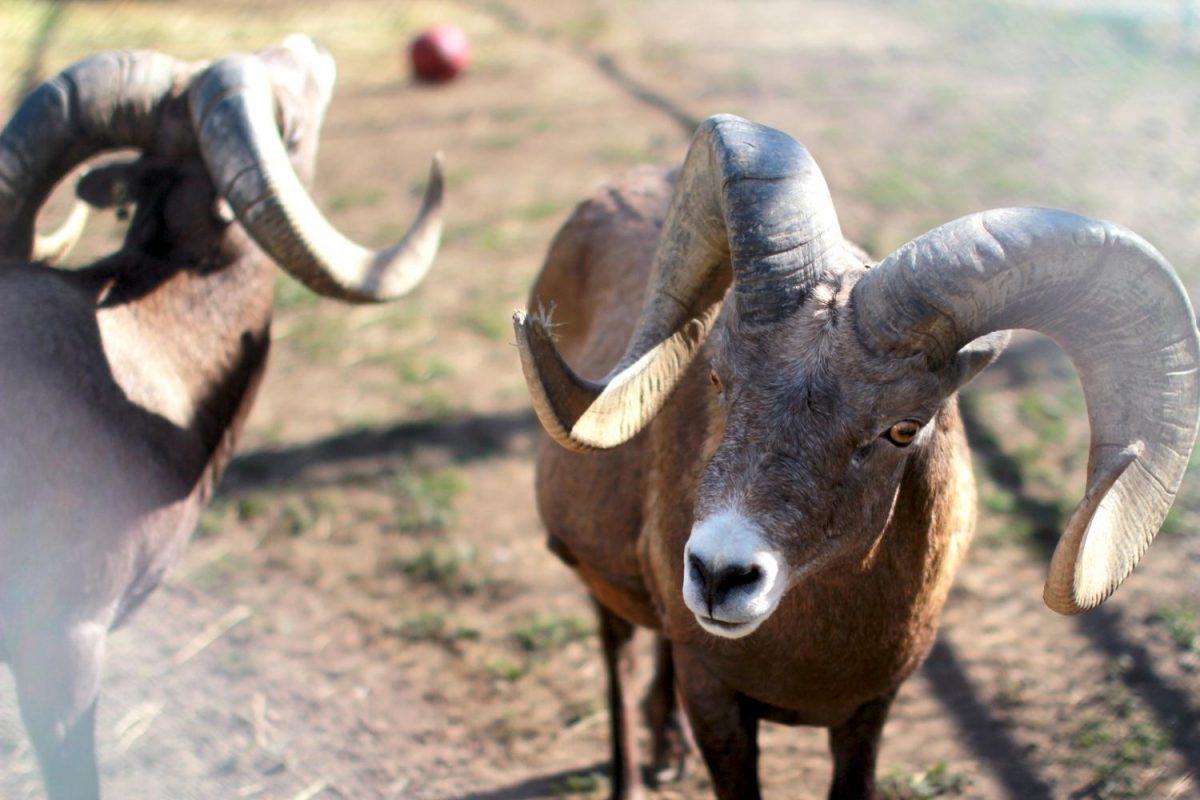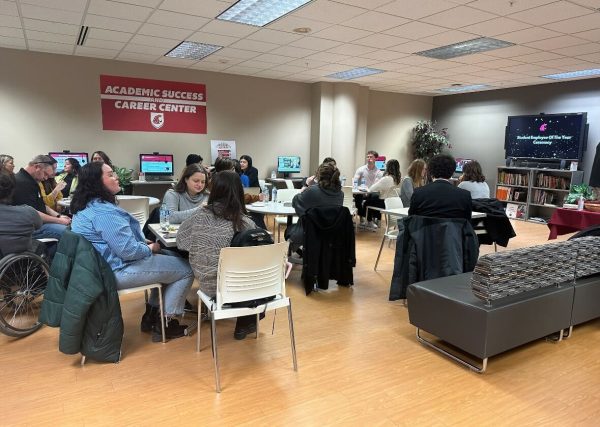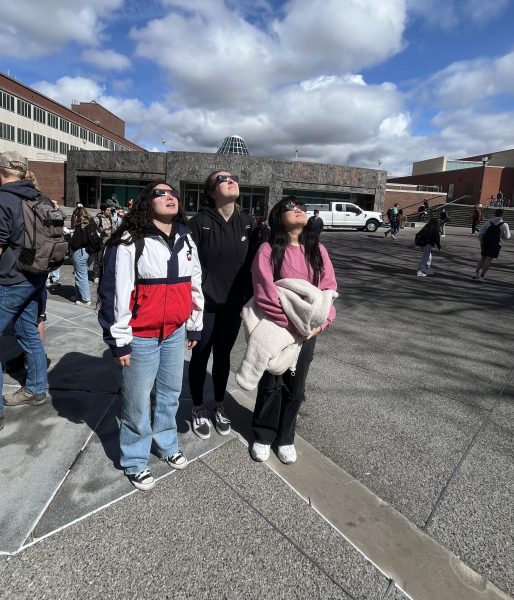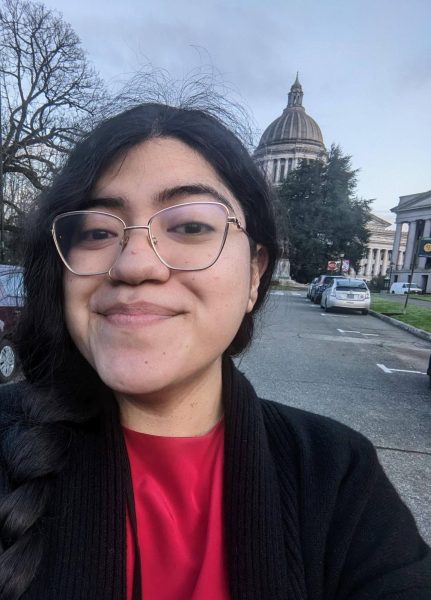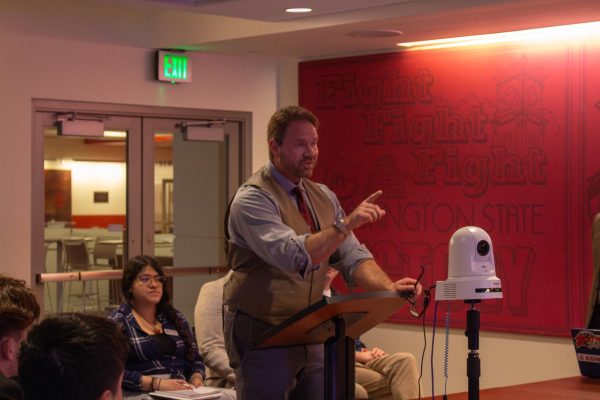Animal and plant research makes way for airport expansion
Leaders are still unsure if funds from airport sale will cover transition
RACHEL SUN | DAILY EVERGREEN FILE
The animal rights organization cites three public records reports from the USDA where, according to PETA, there have been violations of the Animal Welfare Act. One report involves three bighorn sheep.
September 29, 2017
A group of bighorn sheep stare out of their enclosures through chain-link fencing at the WSU animal research facilities on Terre View Drive, on a sunny Tuesday afternoon.
At the facility, bighorns are hand-reared by scientists to ensure they are free of diseases that could affect the studies they are a part of. Two rams walk to the gate and sniff curiously as animal research leader Donald P. Knowles, and Senior Communications Manager Charlie Powell walk towards them.
“See those ridges on the horn?” Powell said. “That’s how you tell how old they are. This one is three-years-old.”
The research facilities are a series of modest-looking pale green buildings, with enclosures for cattle, bighorn and domestic sheep.
At a glance, passers-by might not realize the impact these animal test-subjects have. Powell’s studies on vaccinations and the spread of disease bring in roughly $7 to $9 million in grant funding annually. Knowles said approximately $6.5 million of which comes from agricultural research service of the U.S. Department of Agriculture intramural program.
Now, a planned expansion of the Pullman-Moscow Regional Airport in the coming year, means the animals will be relocated to the old swine research center’s location on Country Club Road.
Knowles said although it would be legally possible to get an exemption from rules requiring they move from their current location, the increased air traffic would impact study results.
“We introduce noise, and we introduce vibration,” he said. “We know from previous studies that those things affect animals that are on research projects.”
The move will present some challenges, but Knowles said he does not expect the research to be negatively affected.
“If we see any differences in transition we’ll be able to record those,” Knowles said. “But because of the time we have and the careful consideration, I think we’re able to make the movement as little stress as possible [for the animals].”
Olivia Yang, associate vice president of Facilities Services, said the university does not yet know if the $14.7 million generated from the sale of the land Powell’s research is located on, will be enough to cover all the cost of the moves.
“We hope [it covers the costs], she said. “We don’t know yet.”
If the $14.7 million does not end up being enough, Yang said, the university will likely have to make cuts to programs. However, if this were to happen, the move would not affect student tuition.
“Normally, when an airport moves somebody, the people that are in the way are people that are in their homes,” Yang said. “You can quantify it.”
However, with the animal research buildings, Yang said the cost of the reimbursement for the structures may not accurately represent the value of the findings.
“The buildings themselves are not as valuable,” Yang said. “The research that is done there is probably intangible. My favorite example is, they did research on mad cow disease. So because of the research done there, it’s safe for you to eat hamburgers.”
Animal research is not the only WSU program affected. Grafts from trees in the WSU Turkey Orchard, a roughly 70 acre stretch of land, will be moved from its current location to the Spillman Agronomy Farm.
Richard T. Koenig, interim chair of the Departments of Crop and Soil Sciences and Horticulture, said the move is not expected to strongly affect research, but there will be a delay for the learning facilities for students in horticulture, ecology and biology courses that currently make use of Tukey Orchard.
“There’s also a lot of teaching,” Koenig said. “That’s a primary focus of the orchard, as a base for teaching the horticulture courses.”
For animal science, there are currently two lines of research in the joint WSU and USDA program: bighorn sheep and cattle.
The goal of the current research with the bighorns is to learn about how disease spreads between domestic and wild animals.
“We want to guarantee we have healthy wildlife, and healthy domestic sheep,” Knowles said. “Could you keep [the bighorn and domestic sheep] separated by a few feet, or does it have to be a few meters? Or does it only occur if they touch nose-to-nose, which they will.”
Several other research subjects, a few head of cattle munching hay in nearby pens, are part of vaccine research that brings in extramural dollars from the Bill & Melinda Gates Foundation.
The cattle are being studied to understand a tick-borne parasite, known as Theileria parva, which shares traits with the human disease malaria. Knowles said advancements in vaccinations could lead to progress in human vaccinations as well.
“What the Gates Foundation funds out here is vaccine research,” Knowles said. “So the cattle are on long-term vaccine studies.”
The vaccine research also means more economic stability for families who are dependent on livestock in other countries, Powell said.
“When you consider animal agriculture in other parts of the world,” he said. “That could be the primary asset to a family equivalent to the value of a home in the United States.”


